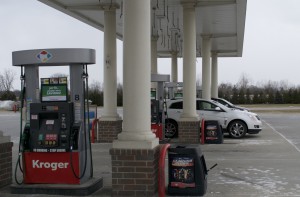
With gas prices averaging nearly $3 a gallon in the U.S., at least one analyst is concerned truck and utility vehicle sales could be impacted.
Going into the Memorial Day weekend, the traditional opening of the summer driving season, the average price of gasoline across the U.S. continues to climb and analysts expect even higher prices lie ahead, prompting at least one respected analyst suggest buyers of new vehicles may start to rethink their purchase decisions.
Gas prices jumped 12 cents during the past 14 days, and six-cents since last week, landing the national average at $2.93 – the highest price point going into the Memorial Day weekend since 2014, according to AAA.
“AAA forecasts nearly 37 million travelers will hit the road for the holiday weekend. Compared to an average of the last three Memorial Day weekends, pump prices are nearly 50 cents more expensive and climbing,” said Jeanette Casselano, AAA spokesperson.
“Trends are indicating that this summer is likely to bring the national average to at least $3 per gallon,” she said.
(Chevy escalates truck engine wars with four new offerings. Click Here for the story.)
With gasoline prices on the upswing, Maryann Keller, long one of the auto industry’s most respected analysts, signed off on a note to investors last week, cautioning that the steadily rising price of gasoline has historically prompted consumers to look for more fuel-efficient vehicles and could spell the end of the boom in the sales of sport utility vehicles.
“Gasoline prices are rising. Historical analysis shows that rapid gas price escalation tempers buyer enthusiasm for large vehicles,” she noted on her firm’s website.
Today, 14 states tout an average of $3 or more. Outside of the typical West Coast states, Idaho and Utah, this count includes six Northeast and Midwest states: Connecticut, Pennsylvania, New York, Washington, D.C., Illinois and Michigan. In addition, Arizona, New Jersey, and Rhode Island are all within four-cents of hitting the $3 mark, AAA said.
The largest monthly increases are included Minnesota where prices climbed 28 cents per gallon, Wisconsin where prices increased by 27 cents, Missouri where prices went up 25 cents as well as Connecticut, Delaware and Illinois where prices went up 23 cents and Wyoming and Kansas where prices went up 22 cents per gallon and Arizona and Texas where prices have increased by 21 cents per gallon.

Automotive analyst Maryann Keller warned that gas prices are encroaching on levels that could impact truck and SUV sales.
Meanwhile, the price of crude oil edged higher last week following the release of EIA’s weekly petroleum report that showed total crude inventories dropped by 1.4 million barrels. If this week’s EIA report shows another inventory draw, motorists can expect crude prices to continue climbing.
(Click Here for details about Ford restarting F-150 production post-fire.)
In addition, at 2.57 million barrels per day, crude exports from the United States reached the highest rate ever recorded by Energy Information Agency. The new record rate was 690,000 barrels per day more than the previous week and 1.48 million b/d more than this time last year.
The surge in exports is attributed to growth in domestic crude production and Congress and the Obama Administration lifting the 40-year ban in 2015 on exporting crude oil from wells in the United States.
Steady growth in crude exports from the U.S. will likely put another spotlight on the crude reduction agreement between OPEC and non-OPEC producers, which is set to expire at the end of 2018. The reduced output from the Organization of Petroleum Exporting Countries or OPEC and its partners, including Russia, the U.S. has been able to sell more crude to foreign buyers, AAA noted in its weekly analysis of the market for crude oil. Higher prices for crude oil invariably mean higher prices at the pump.
As part of a potential trade deal outlined by Secretary of the Treasury Steve Mnuchin, China has promised to purchase more “energy,” from the U.S., putting more pressure on available supplies.
(To see more about Volvo cutting diesel engines from its portfolio, Click Here.)
Analysts are predicting that the price of crude oil will continue to climb in the months to come because of a combination of rising demand from growth of the global economy and the disciplined approaches to production among the OPEC countries and in the U.S. where memories of the collapse of oil prices back in 2014 has given cautious bankers more control over the companies that spurred the boom U.S. oil production with new technology.


NEWS FLASH — Ford Motor Company announced they are ceasing production of all trucks and SUVs. They will only make Fiestas and Focus’s starting 2019. Stay tuned for further developments.
If there ever is a shift to more conservative transportation, that would accelerate the increase in the national MPG, and also reduce the available funding for roads. I am guessing that, sooner or later, there will have to be a change in how taxes for highway repair is collected.